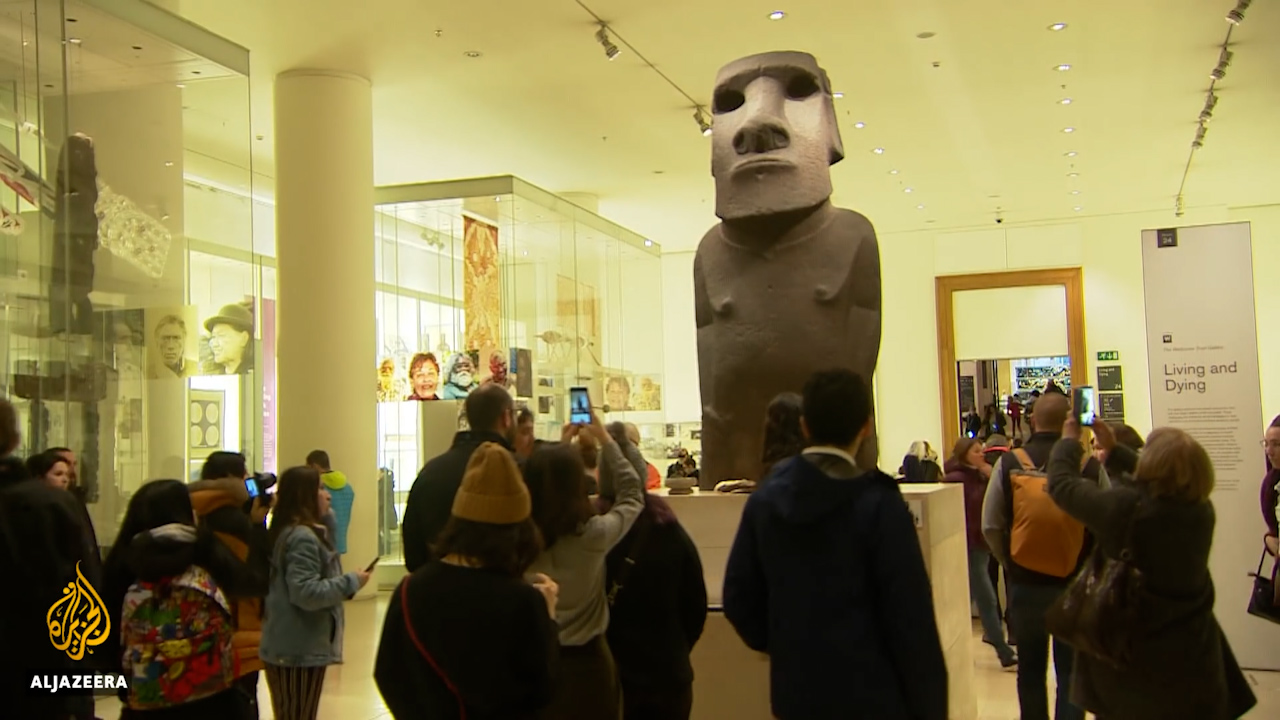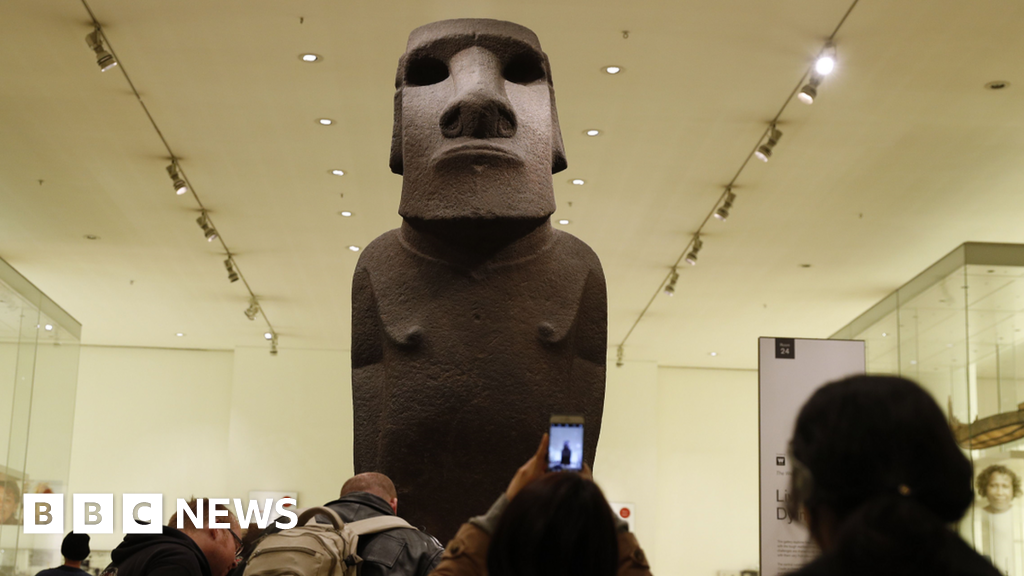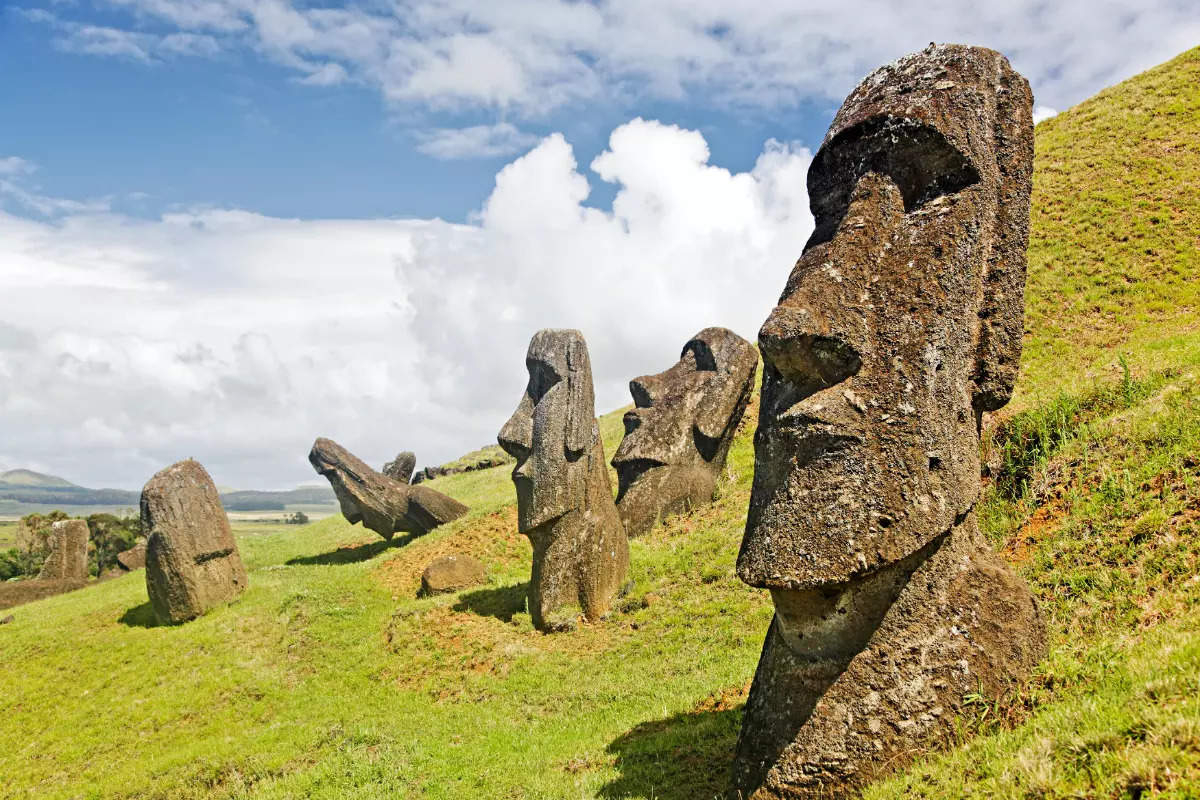The British Museum is in a heated debate over the repatriation of two iconic moai statues from Easter Island, also known as Rapa Nui. Dating back to 1868 when British surveyors removed these stone monuments from Rapa Nui, demands for their return to Chilean territory.

Also Read: Blinkerwall: 10000 Year Old Stone Age Wall Found at Bottom of Baltic Sea
Social media activism, by Chilean influencer Mike Milfort, has calls for repatriation, prompting responses from both the British Museum and Chilean authorities.
The moai statues, symbols of ancestral spirits, were carved on Rapa Nui between 1300 and 1600 AD. The British surveyors removed two moai, including the Hoa Hakananai’a, from the island in 1868.
Queen Victoria donated the statues to the British Museum in 1869, sparking calls for their return to Rapa Nui.
Chilean influencer Mike Milfort mobilized his one million followers to demand the repatriation of the moai. President Gabriel Boric of Chile voiced support for the campaign.
The British Museum faced a barrage of comments on its social media platforms, making temporary closure of comments on certain posts.
Residents of Rapa Nui express a cultural and spiritual connection to the moai, viewing them as integral to their heritage.
Mayor Pedro Edmunds Paoa addresses the importance of the Hoa Hakananai’a as a symbol of peace and calls for its recognition and return.
Concerns are raised about the reduction of the moai to an internet meme and the exploitation of the situation for self-promotion.
Also Read: Evidence of Homo Sapiens in Northern Europe 45000 Years Ago Discovered
The British Museum tells that the artifacts were acquired legally and are part of humanity’s shared heritage.
Comments on social media posts were temporarily deactivated, citing safeguarding considerations and the need to maintain a constructive dialogue.
The museum expressed its efforts to maintain open relations with colleagues in Rapa Nui, including reciprocal visits and collaborative initiatives.
The controversy surrounding the Easter Island statues shows debates about the repatriation of cultural artifacts and the legacy of colonialism.
Similar calls for repatriation, such as Greece’s request for the return of the Parthenon Sculptures, underline the global importance of this issue.
The intersection of social media activism, cultural heritage, and international relations shows a challenges for museums and institutions worldwide.
Mayor Pedro Edmunds Pao of Rapa Nui expressed concern over the politicization of the issue, addressing the deep cultural and spiritual significance of the moai to the islanders.
Islanders desire recognition of their autonomy and ownership of their cultural heritage, stressing the need for the rightful return of the statues.
The moai statues are not artifacts but embody ancestral spirits and symbolize peace, as evidenced by their role in the Tangata manu tradition.
Rapa Nui’s cultural identity is intertwined with these statues, making their repatriation a matter of cultural preservation and respect.
Also Read: Ram Mandir Inauguration: PM Narendra Modi Unveils Ram Lalla Idol in Ayodhya
























